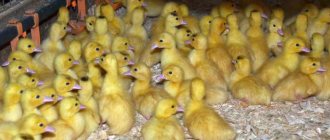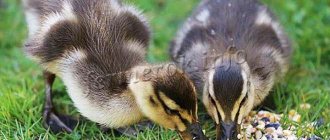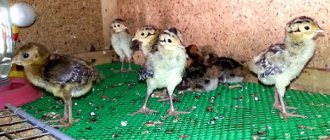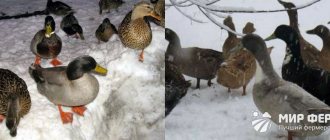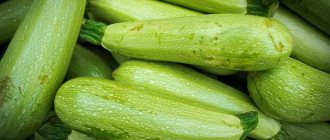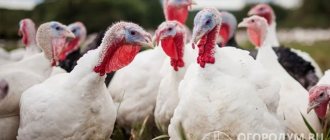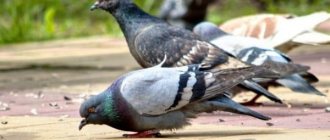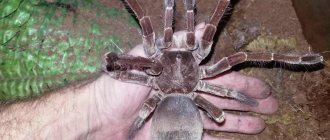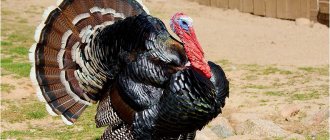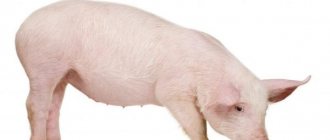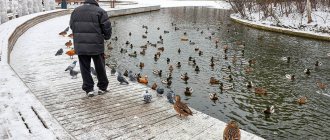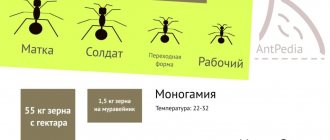Ducks are omnivorous birds; they eat everything they find, from plants to various animals. Their diet depends on their species. For example, the merganser duck, which has a serrated, hooked beak, prefers to eat fish, while ducks such as mallards and pintails prefer to eat vegetation, which they search for by diving headfirst into the water.
In the wild, the diet of ducks is highly dependent on their habitat. Ducks that live near wetlands eat various amphibians, such as frogs, shellfish or small fish. Ducks that live in bodies of water near meadows, fields or parks eat seeds, grains and grasses.
Wild ducks often eat fish eggs, small crustaceans, algae, worms and insects.
In order to aid digestion, like many other birds, ducks eat sand and fine gravel, which helps them break down food in their stomachs.
The main diet of ducks is:
- Plants and algae;
- Insects;
- Amphibians, crustaceans, small fish;
- Corn.
What can you feed wild ducks: feeding them on the pond in winter
In zoos, waterfowl are fed specially prepared food in winter. They include all the nutritional elements (protein, carbohydrates, fats) that ducks can get from their usual food. But compassionate townspeople continue to feed the ducks remaining for the winter with baked goods and leftover bread.
Without receiving the necessary nutrients, the bird weakens and becomes more vulnerable to cold and disease. Trying to help starving waterfowl, people often cause irreparable harm to them. What to feed ducks in winter to really help them survive severe frosts?
It is advisable not to feed baked goods to the bird. The ducks will eat, but they won’t be able to get anything but harm from such food. You can prepare high-quality food for ducks of different species overwintering on a pond yourself. Its basis can be whole grain (oats, barley, wheat) or pearl barley, oatmeal, whole grain crushed grain (corn, barley, wheat).
Grain mixture
Protein components of bird feed can be as follows:
- fish or meat waste;
- egg;
- meat, fish, bone meal;
- bone residue in the form of minced meat (sold in grocery stores);
- peas;
- sunflower, soybean, rapeseed cake or meal;
- low-fat cottage cheese.
Meat or fish waste should not contain large bones. They can be fed raw or cooked. Before feeding, the egg should be hard-boiled and chopped together with the shell.
Protein components are mixed with grain feed. Grain for ducks can be pre-boiled or steamed, but in severe frosts it is better to give it dry so that the food does not have time to freeze. Whole grains can be sprouted before feeding until green sprouts 1-2 cm long appear. This food significantly increases the content of vitamins and biologically active substances that are lacking in the winter diet of birds.
But what should you feed wild ducks to enrich their diet with the fiber and vitamins they need? For waterfowl wintering in urban reservoirs, the following food can be prepared:
- dried nettle, clover, alfalfa, dandelion;
- any root vegetables;
- pumpkin or zucchini;
- fresh cabbage.
Ducks can be fed any root vegetables
Some vegetables need to be chopped before feeding. This applies to hard root vegetables and raw potatoes. Since birds do not have teeth, they will not be able to gnaw hard vegetables, and the flat beak of ducks does not allow them to peck carrots or beets. Therefore, all root vegetables with a dense structure must be grated or, raw or boiled, passed through a meat grinder. The same should be done with zucchini, pumpkin, and watermelon rind.
Leafy vegetables such as cabbage can also be given whole. The ducks do a good job of picking them off, tearing off small pieces. Dried herbs or bundles of hay are also not chopped.
As spring approaches, vegetables begin to sprout even in a cold cellar. Ducks will like young carrot or beet leaves. Trimmed tops of root vegetables or green feathers of onions and garlic will be very useful in the vitamin-poor winter diet of birds. If desired, you can specially germinate small root crops by planting them in a box with wet sand, sawdust, soil, and then feed the ducks with fresh herbs.
When preparing a winter diet for ducks, one should not forget about useful minerals. In natural conditions, it receives part of the calcium and phosphorus the bird needs from the bones of fish and frogs, shells of snails and crustaceans, which it feeds on in the pond.
It would be nice to give crushed egg shells
When artificial feeding, you can include crushed egg shells in the diet. It is also convenient to use feed chalk or shell rock (sold in pet stores). When meat and bone meal is included in the feed as a source of protein, additional mineral supplements are not necessary.
We should not forget about the special and important addition of gravel or coarse river sand for all birds. For ducks, the size of the pebbles can be about 0.5 cm
As such feeding, it is recommended to use marble chips, PGS, and natural river sand for the aquarium. Gravel for ducks can be added to the feed mixture in an amount of 5% of its volume or periodically poured into a special container. Pebbles help birds grind food in their stomachs.
They happily eat bread, seeds and other delicacies. But, despite the omnivorous nature of birds, some of the products can damage bird digestion.
You will learn about what you can feed wild ducks and what you cannot feed them in this article.
What types of food are suitable for wild animals?
What to feed wild ducks is useful to know for those who at least sometimes feed them. It is optimal to use food of grain origin or made from legumes. A special compound feed would also be a good option.
It should be remembered that wild ducks should not be given the same type of food. It should be changed periodically, or even better, mixed. Combined food is ideal for birds.
Cereals are excellent food for ducks
Excellent food for wild ducks include:
- barley;
- oats;
- wheat;
- corn;
- peas.
The share of barley in the feed mixture must certainly be 30-35%. The composition and ratio of other components changes at your discretion.
Compound feed
The modern market provides a wide selection of combined feeds. In addition to the main elements, they usually contain a variety of useful additives. The main ones are amino acids and minerals. It is better to choose food that is created specifically for ducks. It is quite possible that it will be possible to obtain a composition intended specifically for wild ducks. True, this is quite rare, but the food exists.
If wild ducks are kept in a household and granular feed is purchased for them, then it should be soaked before feeding it to the birds. This way, not only will it not fly around the enclosure, but it will be easier to eat. But the food has a drawback: a rather high price. If there are not a lot of birds, then the difference is imperceptible, but with a large number of birds the amounts come out to be decent. Self-prepared mixtures are much cheaper at cost.
No need to buy the cheapest combination food
It is important to follow the manufacturer’s instructions, quantitative composition and expiration date. Otherwise, due to improper nutrition, ducks may be susceptible to various diseases.
Dry mix
It is better to create a diet for domestic birds yourself. If a bird is fattened for meat, then after the third week of life it should significantly increase the amount of feed (three times). And when young animals are kept for other purposes, such an increase will be inappropriate.
The diet of adult ducks and ducklings is different
Dry mixtures purchased at a specialty store or farm market contain a balanced complex of vitamins and microelements. The ducklings quickly gain weight, and after a couple of months they are ready for slaughter. It is recommended to moisten the mixture before using it.
What can you feed wild ducks in a pond?
First of all, you should understand that you cannot feed ducks different types of baked goods. Yes, having discovered that abandoned crackers are edible, mallards will willingly pick them up, but such food, full of fats and yeast, poor in fiber, is very poorly digested.
And rye bread is the most dangerous for duck health, as it causes fermentation in the crop and ultimately poisons the body.
There is a misconception that crackers do not have such a negative effect on the body as plain bread. However, even small crackers can swell greatly inside the bird after passing through the gastrointestinal tract.
Don't feed your ducks everything you eat yourself. A bird can also pick up those foods that are harmful to it without sorting it out. Moreover, food that has been in water for too long can become covered with harmful fungi and bacteria.
One of the rules of good form when feeding ducks is to leave food for them on the shore rather than throwing it into the water. In this way, you not only do not pollute the reservoir, but also extend the shelf life of the products you are trying to feed the ducks.
This happens due to the fact that you do not create additional conditions for the proliferation of microorganisms that contribute to rotting.
In summer
In the summer, mallards should be fed only under certain conditions: either if there are any problems with their habitat, or when the population has become too large, or in relation to wounded and sick birds that cannot get food themselves.
Products for feeding:
- Grated hard cheese. You should choose one that remains afloat for some time and will be picked up by ducks almost immediately in full.
- Oatmeal. You can simply boil the porridge and roll it into balls and throw it straight to the birds.
- Boiled vegetables, cut into small cubes.
- Fruits and berries. It is enough to cut them into small pieces and give them to the mallards.
- Aquatic plants such as duckweed or algae. They are a rich source of vitamins. Suitable for feeding both fresh and raw.
- Special food for ducks, which is sold in pet stores. They come in granules and stick well to the surface without dissolving if you decide to throw them right next to the bird. If the feeding is left on the shore, it is better to moisten the food a little with water - this way it will not stick to the beak.
in winter
During the cold season, the birds remaining in our latitudes can be fed, but it is imperative to do this correctly, observing some subtleties in the choice of products
It is important to compensate birds for the lack of important microelements, vitamins and protein
- Corn. A universal crop for most birds. It is rich in fiber, vitamins and proteins, especially those varieties that have a richer yellow color.
- Legumes. Peas and beans are great for ducks. However, they are too large for mallards, so the beans will have to be crushed.
- Wheat. It is better to use special varieties developed for feeding birds. These varieties are saturated with proteins, vitamins B and E. But millet, which nowadays rarely ends up on a person’s table, is also suitable as a cheap option.
- Oats. It is very relevant in winter, as it contains up to 5% fat and a large amount of amino acids.
- Barley is a good base for duck feed. Moreover, its type does not matter: whole grain, sprouted, soaked or any other type. You should only avoid giving it to young animals, since chicks need their own “diet”.
Cereals can be given either dry or sprouted. Moreover, in sprouted form you replace the lack of greens in the bird’s diet. Also, for more comprehensive feeding, combining different varieties of cereals will be useful.
Most often they mix it “by eye”, but they adhere to the rule that there should be 30–35% barley in the mixture.
As an additional protein supplement to the bird's diet, you can include bone meal, fish or meat waste, and even low-fat cottage cheese. Remember that this is only an addition to the diet and is not a main product.
To enrich the mixture with vitamins, you can add dried herbs (in particular dandelions), root vegetables, pumpkin, zucchini or cabbage. You can use leftovers and trimmings to save money. For example, wilted dill or peelings from the above vegetables, carrots or lettuce will complement the birds’ diet well.
It is better to grind solid products to make the task easier for ducks.
In winter, the duck will also need a source of calcium to ensure proper digestion. They can be crushed eggshells, shell rock, chalk, or even coarse sand.
Feeding ducks for eggs
Before the start of the mating season, some adjustments are made to the diet. This is done within 14 days. Part of the grain (namely wheat) must be sprouted. To do this, the cereals are filled with water and left for a couple of days. The water must be changed so that it does not turn sour. Greens are very useful; if you don’t have them, herbal flour will help out. Here is an approximate daily diet for expectant mothers (per head per day):
- Grain - 130 gr.
- Bran - 30 gr.
- Alfalfa (fresh or dried) - 20 gr.
- Greens - 100 gr.
- Potatoes - 100 gr.
- Bone meal - 10 gr.
- Sprouted wheat - 16 gr.
To obtain high-quality meat, feeding ducks must be varied. This allows the bird to receive all the necessary substances and consistently gain weight. In addition to grains and kitchen waste, be sure to add herbs, vegetables, and vitamins. The work of a poultry farmer will be much easier if there is a reservoir where waterfowl can forage. If you make some effort, then after 2 months. You can get excellent dietary meat.
What to feed wild ducks at home
Most often, the diet of a domesticated mallard is no different from that of a domestic duck.
Young animals
Starting from the first days, young ducklings are provided with a feeder and drinking bowl. You can feed them chopped boiled eggs. Within a day after the ducklings hatch, they begin to eat on their own.
Some poultry farmers recommend using starter feed, which contains all the necessary nutrients for the body of a young chick.
A few days later, when the ducklings are stronger, crushed cereal is added to the egg and cottage cheese is introduced into the diet. It is also necessary to ensure that there is always clean water in the drinking bowl.
Important! Protein should be a mandatory component in the diet of ducklings, so already on the 3rd day they can be given minced meat or fish, as well as bone meal. Young animals need to be fed every 2 hours until they are 5 days old.
In the future, this interval is gradually increased. The feeding regimen for one-month-old chicks is reduced to 3 meals a day
Young animals need to be fed every 2 hours until they are 5 days old. In the future, this interval is gradually increased. The feeding regimen for one-month-old chicks is reduced to 3 meals a day.
10-day-old ducklings can be given pre-chopped greens and boiled vegetables. For greenery, you can use grass or add a little duckweed, which is a natural source of green food for these birds. At this stage, boiled eggs and cottage cheese are removed from the diet.
The food given to the chicks should be crumbly, since they have not yet learned to clean their beaks from wet food. After the ducklings replace their down with feathers, they can be fed like adults.
If wild ducklings are kept in natural conditions and not isolated from adults, then they quickly learn to obtain their own food. They spend a lot of time searching for worms and larvae, which are an additional source of protein. In addition, they are very friendly and try to take care of each other, even if there is no female nearby.
Adult ducks
The diet of adult ducks should consist of:
- greens (grass, algae, duckweed, etc.) - 50%;
- cereals (crushed grains and legumes) - 30%;
- bran - 10%;
- cake - 7%;
- root vegetables;
- fish and meat waste;
- crushed shell rock and chalk;
- table salt.
Did you know? In the wild, in bodies of water, ducks are able to dive to a depth of up to 6 m when searching for food.
It is necessary to feed wild mallards 2 times a day with mash, and at night give them whole grains, which will satisfy the feeling of hunger for a long time. It is necessary to prepare wet food for 1 time, and calculate its quantity in such a way that the feeder is empty within 30 minutes. This approach will help protect food from souring.
Balanced feed can be made at home.
To prepare 1 kg of feed you will need:
- 250 g corn;
- 250 g wheat;
- 200 g barley;
- 50 g peas;
- 50 g bran;
- 80 g sunflower cake;
- 20 g yeast;
- 40 g bone meal;
- 50 g of chalk and crushed shell rock;
- 8 g table salt;
- 20 g feed fat.
You need to make sure that the bird always has clean water, and you should also install a container with a shell and gravel. Sand helps the duck's digestive system, so it is also worth taking care of its availability.
When feeding wild ducks on a pond, you need to remember one golden quote from Antoine de Saint-Exupéry: “We are responsible for those we have tamed.” After all, by providing a source of food to a wild bird, we dull its natural survival instinct.
However, even if these birds have settled for a long time, it is necessary to provide them with a balanced diet throughout the year.
Questions and answers:
What fruits and vegetables can be given to ducks?
Ducks can be given grapes, bananas, pineapples, apples, celery, carrots, carrot tops, cucumbers, watermelon, pumpkin, zucchini, pumpkin and squash seeds, lettuce, cabbage, sweet potatoes, tomatoes, blueberries, blackberries, raspberries, peaches, apricots, fruits .
What vegetables and fruits should not be given to ducks?
Spinach, onion, avocado. The seeds should be removed from fruits as they are usually poisonous. Do not feed raw potatoes. Ducks should not be given plants of the nightshade family, these are leaves of potatoes, tomatoes, eggplants, etc.
Can ducks have eggs?
You can, but they must be boiled, otherwise they may start eating their own.
Is it possible to give bread?
Bread is the most accessible food for birds living in park ponds. Feeding ducks with it can be observed everywhere. Elderly people, mothers with children, and even couples in love do this.
Seeing the reaction of birds to thrown crumbs, many express confidence in the absolute benefits of this event for hungry city birds. However, are ducks really hungry? If feeding occurs in the summer, then, most likely, the birds are not hungry at all, and the greed with which they grab the bread that has fallen on the water is caused by a simple instinct that took hold during the nestling period. Competition, which is an important evolutionary factor affecting the survival of the species, is especially intense among ducklings.
Even a well-fed bird will make every effort to grab the bread first. There is a stir in the flock, seemingly the result of the hunger the ducks are experiencing. This often prompts individual citizens to regularly go to the pond in order to feed the ducks living there, first stopping at a store or bakery. However, is this food good for birds?
Bread is a combination of large amounts of carbohydrates, fats, salt, and yeast. All this is not present in the usual diet of birds; accordingly, there are no enzymes necessary to break down all these ingredients. As a result, bread swallowed by ducks passes through their gastrointestinal tract slowly, swelling and preventing the birds from eating normally. Particularly dangerous are varieties of bread containing rye flour, which triggers active fermentation, which further poisons the body of a wild duck. Often birds that have eaten too much bread die from a blockage in the stomach that they cannot cope with.
With regular feeding, birds begin to wait for the person feeding them, not wanting to look for more suitable food. Often it is grain feeding that causes the wintering of usually migratory birds. This can cause mass deaths of late-flying wild ducks. In winter, with the onset of cold weather, bread feeding usually stops (grandmothers do not take their grandchildren to the park, pensioners walk near their homes.
Feeding ducks stale, moldy bread is completely unacceptable. Birds will swallow it with the same greed as fresh. Mold that gets into the duck body can lead to the death of birds within a few days, causing the development of an incurable disease - aspergillosis. This disease is uncommon, but once it affects one duck in a flock, it quickly spreads to the entire flock, causing sudden mass deaths of wild ducks.
What foods are bad for ducks?
List of products dangerous to the normal functioning of birds:
| The product's name | Harm |
| Bread products, baked goods and any other flour products | Fermentation of yeast, blockage of the digestive system. Death. |
| Crackers | The product swells in the stomach and makes breathing difficult. |
| Flour | The use of fishmeal is allowed, but not ordinary one. The bird will suffocate. |
| Zucchini | Has laxative properties. The duck will begin to sway and walk heavily. |
| Moldy products | Mold doesn't just harm people. Fungi form inside the body, causing chronic disease. |
| Leaves of maple, oak, birch and poisonous plants | Anything that harms a person is twice as harmful to an animal. |
Birds, just like people, can suffer from an improper diet. If you don’t know what to feed the duck, it’s better to leave the idea altogether.
Diet depending on the time of year
In nature, the diet of ducks varies significantly with the seasons. The autumn depletion of their diet generally forces them to make annual long migrations, one of the purposes of which is to provide food for migratory birds in the winter. There, in their second home, the birds find enough food, similar to what they consume in the summer in their nesting areas, and there is no change in their diet. Another thing is wintering ducks, which are forced to endure rather extreme changes in conditions, necessitating changes in the quantity and composition of food.
This is the most difficult season for the remaining migratory birds. The duck finds itself in conditions that are completely unusual for it. Low temperatures, ice on the surface of water bodies, reduction of usually abundant natural food. To survive such extreme conditions, you first need to roughly double the nutritional value of your diet. How to achieve this? In feed mixtures, so-called mash, the concentration of the most high-calorie elements (grain, feed, potatoes) should be increased. The animal component of the mash needs to be increased.
In summer, birds in a natural reservoir receive quite a lot of animal feed; it is necessary to try to cover the reduction in natural animal proteins by feeding the ducks with fish and meat meal. Dairy products, eggs, small fish and various types of meat waste can be an excellent source of essential amino acids. In this case, the presence of bones or their fragments is unacceptable. Once a duck has swallowed a bone, it cannot be thrown back out. The bird usually dies.
It is better to give the mash warm, in a semi-liquid form. The amount of feed is calculated so that the bulk of it is eaten in a few minutes. The food remaining in the feeders will freeze and will be inaccessible to the ducks. In addition, birds should always have access to dry grain mixtures, allowing them to eat almost constantly.
Spring
As water bodies thaw, ducks, as a rule, quickly move to searching for food in the water. If the pond ecosystem is close enough to natural, ducks begin to actively feed as soon as the banks appear. The spring migration of ducks returning to their nesting sites usually occurs after the rivers open, during the spring flood. There is no shortage of food at this time for arriving birds: fish go to spawn, amphibians spawn, and invertebrates are active.
Park ponds usually cannot provide such a varied diet, and the ducks on them must be fed even during this season.
The composition of the spring feed mixture is practically no different from what the birds consumed in winter, only the calorie content and quantity of food should be reduced. Ducks no longer have such an urgent need to maintain their body temperature, so excessive feeding can cause obesity, which is detrimental to wild birds.
The most favorable season for waterfowl. Under natural conditions, ducks receive all the substances necessary for life in sufficient quantities. However, birds that have settled in park ponds will still need additional feeding
During this season, it is very important to diversify the ducks’ diet with so-called seasonal feeds.
Autumn
This is a very important time for migratory birds. Abundant feeding is designed to provide sufficient energy reserves for long-distance migration. It is very difficult to artificially create a transition from abundant feeding to meager feeding, however, it is still possible
A properly selected diet can encourage ducks to leave the pond at the same time as their brothers living in natural conditions
It is very difficult to artificially create a transition from abundant feeding to meager feeding, however, it is still possible. A properly selected diet can encourage ducks to leave the pond at the same time as their brothers living in natural conditions.
In practice, most often, it is not possible to guess the timing of the decrease in the abundance of food, and the ducks may again miss their departure time. In this case, it is necessary to prepare them for the coming winter, not reducing, but, on the contrary, increasing the caloric content of feed.
See the following video for feeding wild ducks.
How to prepare compound feed yourself? Recipe
Preparing feed for domestic ducks is a great way not only to save money, but also to be confident in the quality of the product. The ingredients you will need are:
- corn flour;
- wheat bran;
- greens (nettle leaves, clover, alfalfa, willow leaves).
It is recommended to prepare such a volume of feed that the birds can consume within 24 hours. This is due to the fact that the shelf life is short and the composition of the product begins to deteriorate quickly.
First of all, you will need a container with a volume of 10 liters. The chopped greens are poured with boiling water and left to cool for 30 minutes. Then 0.5 kilograms of corn flour and 1 kilogram of wheat bran are added to the mass. The resulting mass is thoroughly mixed. The result should be a thick and dense mass.
You can see the preparation of duck food in the video below:
What and how to feed a duck for meat for rapid growth
It is very important for poultry farmers who want their ducks to reach high weights to stick to a diet that contains grains. Birds will rapidly gain weight, while being enriched with the necessary microelements
Cereals are commonly used in poultry farming, which has become a certain tradition. As a percentage, cereals always take up more than half of the diet.
Feeding the young
These crops have their advantages that bring considerable benefits:
Corn has always been considered a high energy source. When it is digested, no excess remains in the ducks’ body; it easily saturates the bird. Wheat grains are no less useful, but come a little behind
The nutritional value is due to the high protein content. Wheat is important for rapid growth. Barley is beneficial for fiber, but should be given with caution. Ducks do not digest barley-based food well
Therefore, the grains in the mash should occupy no more than a quarter of the mass. Oats are very healthy because they are characterized by a high fat content. In most cases, it is used for fattening for meat. After eating it, duck meat becomes especially piquant and tasty.
Note! By sticking to a higher percentage of grains, you can ensure that the birds grow quickly, while gaining a sufficient amount of weight in a short time. Is it possible to feed ducks bread? No you can not! Because the bakery product swells inside the duck, gets stuck in the esophagus, and can lead to dangerous diseases
Is it possible to feed ducks bread? No you can not! Because the bakery product swells inside the duck, gets stuck in the esophagus, and can lead to dangerous diseases.
Root vegetables and succulent forages
Photo of feeding ducks with duckweed
The warm season is the time for vitamins. Ducks need fresh vegetables, root vegetables, and, of course, greens for normal body function. These products contain nutrients, vitamins, minerals, amino acids - everything you need to improve your productive qualities.
However, in the summer season, as well as spring and autumn, you can harm the bird if you give something wrong, so it is important to understand what you can feed ducks and what not
Greens should make up approximately 20% of any mash if the bird does not have access to free range at least in an aviary. If there is a range, then you don’t have to put grass in the mash - the bird will find it on its own. Ducks digest pea stalks, alfalfa, clover, and nettles well. They are usually collected and ground up, or simply planted in the aviary so that the birds have access to them. Aquatic vegetation is a favorite delicacy for ducks. Plants growing in rivers, lakes, and reservoirs should be present in their diet
And if the bird is not allowed into the pond, it is important to collect such greens yourself and add them to the mash. These herbs include duckweed, elodea, pondweed and some others.
Young animals can eat about 15 grams of aquatic greens per day, and adults can eat up to 500 g/day.
Important! In spring, summer and autumn, keeping poultry is cheaper due to the fact that they find part of the food while walking.
- Root vegetables, namely carrots and boiled beets, must be given with mash throughout the year. In winter they are not difficult to get, but for the bird it will be a real gift. Moreover, feeding vegetables and root vegetables reduces the risk of disease during the cold season.
- Vegetables contain many useful substances. They are added to mash or given separately. Healthy vegetables include cabbage, pumpkin, and zucchini.
What to feed ducks in ponds and reservoirs
Before you start feeding them, you need to think - is it worth doing? If ducks live in a good natural reservoir, where there is a lot of fish and shallow water with mud and aquatic plants, then these birds will feed themselves.
Ducks living in ponds can be fed with berries and fruits.
It’s another matter if there are too many ducks per unit of water surface, and the banks have lost natural vegetation. In this case, you cannot do without artificial feeding.
If the ducks have settled somewhere in a pond or lake far from crowded cities, then you can feed them with the mixtures described above. If it is impossible to provide such feeding, the ducks will have to be fed directly in the water.
In addition to bread, you can give:
- grated hard cheese, which does not sink immediately, so almost all of it is picked up by ducks;
- thick oatmeal (roll into balls and throw or serve directly into beaks);
- boiled vegetables in small pieces;
- fresh berries and fruits, cut into small pieces.
However, the best option is special combined feed for ducks. They are produced in granules, so when they get into water, they do not immediately dissolve.
In winter in the city, when ducks refuse to waste energy on flying, the townspeople take care of the feathered “patriots”. And they do it right, because in the non-freezing areas of city rivers, lakes and ponds, ducks cannot feed themselves naturally. Two-thirds of their food consists of what people give.
In winter, ducks must be fed.
In order for ducks to survive safely until spring and fly away to arrange their personal lives, they must be fed with a variety of foods. Animal feed is especially important. In this case, you can grind the fish fillet, mix it with mixed feed, sprouted grain, oatmeal or porridge, and then roll this mixture into small balls. Any waterfowl will overwinter on such balls.
Diet for increasing egg production in ducks
Good egg laying in domestic ducks requires adherence to a certain diet. During the egg-laying period, birds need to increase their intake of minerals and calcium. Every day a laying hen should drink about one liter of water. It is not recommended to give excessively wet food.
During this period, the bird should be fed no more than four times a day with any food, but with the addition of a yeast solution. To prepare it, you need to dissolve the yeast in warm water, at the rate of twenty grams per liter of liquid. Mix the resulting solution with the main feed.
Feeding wild ducks at home
The mallard naturally lends itself to domestication, so it is difficult to call it a fully “wild” bird. The main difference from the domestic specimen is in size and “household needs.”
Wild ducks are bred for their eggs, because many people find the meat bitter and foul-smelling. Therefore, the feeding recommendations are the same as for keeping conventional species - pre-prepared mixed feed from grain crops, designed so that the bird does not experience a shortage of energy when heating itself in cold weather. In summer, fresh grasses, wet grain feeds and protein components in the form of fish, frogs or insects.
For a comfortable existence of wild ducks in the household, in the summer it is necessary to provide them with access to a reservoir in which they can obtain food of both protein origin and various herbs.
The taste of meat depends entirely on the food.
Real help
In the city in winter there are many ways to help wintering birds without compromising their health. Places where birds will feel protected are zoos and shelters. Here they are provided with food containing all the necessary vitamins and valuable substances. The feed is balanced in such a way that the wild duck does not experience a shortage of it and easily survives the cold.
The mixture of seeds that wild ducks feed on is prepared by hand. This process is described in detail in the article “Do-it-yourself recipes for preparing feed for ducks and ducklings.”
Mash is the best thing you can feed ducks on a pond. They consist of:
- grains of corn, wheat, eggs;
- semolina;
- meat and fish products;
- oats;
- eggs and shells;
- bone and fish powders;
- peas;
- cake;
- bran;
- low fat cottage cheese.
The grain components are pre-soaked or boiled and then mixed with protein ingredients.
Large bones should not be present in waste from meat and fish.
In summer, feed volumes are reduced by one and a half times, since grass is present in large quantities in the birds’ diet.
Protection of merganser ducks
Photo: Merganser duck from the Red Book
The genus of mergansers cannot be called numerous, but its overall population is quite stable. However, certain species of such ducks are on the verge of extinction, are listed in the Red Books of many states and require protection. Rare and endangered species include scaly and Brazilian mergansers. Large and long-nosed ducks are out of danger today and maintain a sufficient population throughout their natural habitat.
To protect merganser ducks and restore their high population, the following measures are being taken:
- constant monitoring. Scientists carefully monitor the current state of affairs, monitor the number of ducks and their health status. They study factors that may negatively affect the population of these birds;
- creation of protected parks. Special parks with all the necessary conditions are created for such ducks. There the birds are under reliable round-the-clock protection; breeding birds in captivity.
The merganser duck is a unique and very beautiful creation of nature. These waterfowl have unusual, bright colors and interesting habits. They are divided into several types, each of which is unique in its own way. Most species of mergansers today are endangered, so the task of people is to protect them and help restore the population.
Tags:
- Anatoidea
- Waterfowl
- Deuterostomes
- Endangered animals
- Anseriformes
- Bilaterally symmetrical
- Wild birds
- Animals of Asia
- Animals of the Azov Sea
- Animals of Argentina
- Animals of Brazil
- Animals of Great Britain
- Animals of reservoirs
- Animals of the East
- Animals of the mountains
- Animals of the Far East
- Animals of Eurasia
- Animals of Europe
- Animals of Kamchatka
- Animals of China
- Animals of the Red Book
- Animals of the Red Book of Russia
- Animals of the forest
- Animals starting with the letter K
- Animals starting with the letter U
- Animals of Paraguay
- Animals of the Tropical Zone of the Northern Hemisphere
- Animals of the Tropical Zone of the Southern Hemisphere
- Animals of the Temperate Zone of the Northern Hemisphere
- Animals of the Temperate Zone of the Southern Hemisphere
- Animals of Japan
- Mergansers
- Sea ducks
- Real birds
- Real ducks
- Unusual birds
- New palates
- Migratory birds
- Lamellaridae
- Vertebrates
- Birds of the Red Book
- Birds of the Red Book of Russia
- Rare animals
- Rare birds
- The most beautiful birds
- Unique animals
- Duck
- Ducks
- Chordates
- Ghostostomes
- Quadrupeds
- Eukaryotes
- Eumetazoans
Poultry house
Since wild ducks are waterfowl, they react negatively to temperature changes. Therefore, it is worth taking care of the building where the poultry house will be located - there should be no cracks or holes. They make a walk next to the poultry house. There should be enough space for movement in the fresh air to make the contents comfortable.
Walking wild ducks
You can limit the walking space with a mesh fence. The height of the fence is 1.5 m. If you plan to keep large numbers of individuals, do not put water in the walking area. Otherwise, the site will be dirty and untidy, and the “tenants” will start fighting.
In the poultry house, you need to select and arrange three places: for ducklings, broodstock, and grown-up individuals. The broodstock includes two families of 3-4 laying hens and one drake. Such a flock will allow you to get enough eggs. The poultry house must have not only feeders, but also drinkers, otherwise the animals will look for water for themselves. Containers for water and food are also installed on the paddock.
It is better not to install open drinkers in the poultry house. This is inconvenient, especially in winter, since ducks can swim in drinking bowls in the cold and freeze.
It is better to purchase drip system products. If this is not possible, you will have to give the birds snow in winter.
Open drinking bowls must be removed. Nests must be placed in the areas where the broodstock are located.
